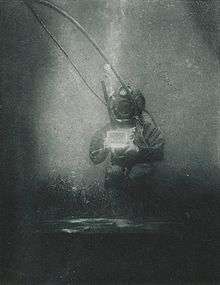Observatoire océanologique de Banyuls-sur-Mer
The Observatoire océanologique de Banyuls-sur-Mer, also known as the Laboratoire Arago, is a marine station located in Banyuls-sur-Mer (Pyrénées-Orientales) on the Mediterranean coast of France. The marine station is made up of several joint research laboratories operated by UPMC-Paris 6 (Université Pierre et Marie Curie) and the Centre National de la Recherche Scientifique (CNRS) and one administrative unit.[1] The buildings and land are part of the UPMC-Paris 6 campus.
The marine station also houses a small public aquarium and a public garden.
History

The marine station was founded in 1881 by the biologist Henri de Lacaze-Duthiers.[2]
After founding the Roscoff Marine Station on the English Channel in 1872, the Sorbonne zoologist, Professor Henri de Lacaze-Duthiers, wished to establish a second marine station on the Mediterranean. The site in Banyuls-sur-Mer was selected over another site in Port-Vendres because of a more favorable financial offer by the village.[3] The public aquarium was in operation by 1885.[4]
Construction of the main building began in 1881.[5] The station officially opened in 1882 under the name of "Laboratoire Arago" named to honor François Arago, who was born in the same region.[4]
Prince Roland Bonaparte offered a steamboat for the use of the laboratory in 1890. Named Roland, the ship was destroyed while in her basin in Banyuls during a storm in November 1908.[6]
.jpg)
French marine biologist Louis Boutan perfected, while studying under de Lacaze-Duthiers, several techniques for underwater photography. He also developed an underwater flash and a remote control for deep waters using an electromagnet.[7] · [8]
Mission
The Laboratoire Arago and its two sister stations in Roscoff and Villefranche-sur-Mer, share two common missions: promoting education and research in marine sciences. All three sites maintain onsite dormitory and restaurant facilities available to visiting scientists and students in support of these missions.
Directors
- 1882-1900: Henri de Lacaze-Duthiers
- 1900-1923: Georges Pruvot
- 1923-1937: Octavio Duboscq
- 1937-1947: Édouard Chatton
- 1947-1964: Georges Petit
- 1964-1976: Pierre Drach
- 1976-1989: Jacques Soyer
- 1989-1999: Alain Guille
- 2000-2005: Gilles Boeuf
- 2005-2015: Philippe Lebaron
- 2015-: Vincent Laudet
References
- Guille, Alain (1993). "L'observatoire océanologique de Banyuls-sur-Mer" (PDF). Recherches Marines: 15.
- Colloque International sur l'histoire de la Biologie Marine. (1963). "Les grandes Expeditions Scientifique et la Creation des Laboratoires Maritimes". Vie et Milieu. supplement 19: 1–370.
- Rapports et délibérations - Pyrénées-Orientales, Conseil Général. 1883. p. 178-179.
- Official site
- Colloque International sur l'histoire de la Biologie Marine. (1963). "Les grandes Expeditions Scientifique et la Creation des Laboratoires Maritimes". Vie et Milieu. supplement 19: 1–370.
- Fabricio Cardenas (3 December 2014). "Le mauvais temps dans les Pyrénées-Orientales en novembre 1908". Vieux papiers des Pyrénées-Orientales (in French). Retrieved 2 August 2016.
- Cárdenas, Fabricio (2014). 66 petites histoires du Pays Catalan [66 Little Stories of Catalan Country] (in French). Perpignan: Ultima Necat. ISBN 978-2-36771-006-8. OCLC 893847466.
- Boutan, Louis (1893), ‘Mémoire sur la photographie sous-marine’, Archives de Zoologie Expérimentale et Générale, Tome 1 (Ser 3), 281-324.